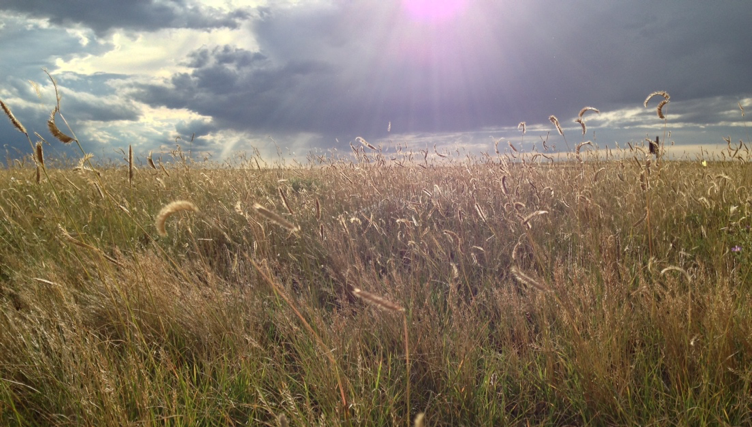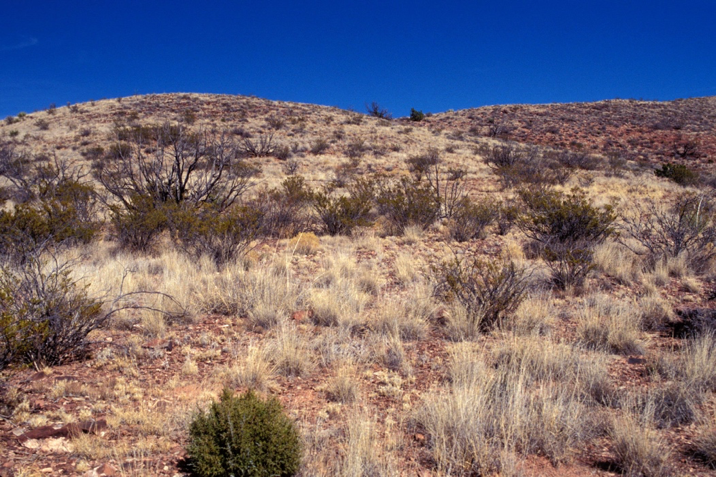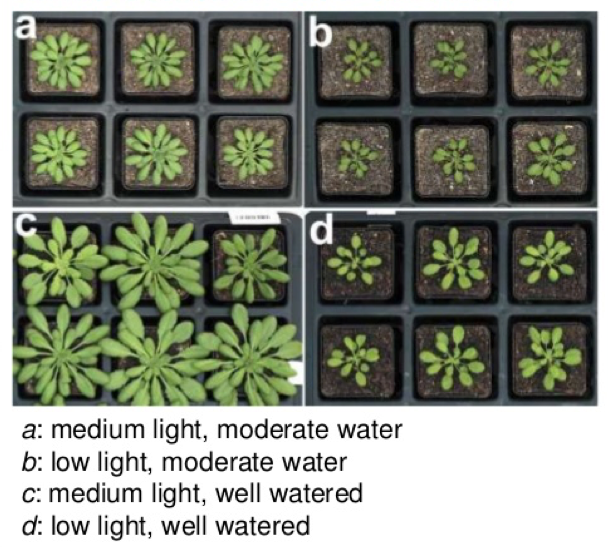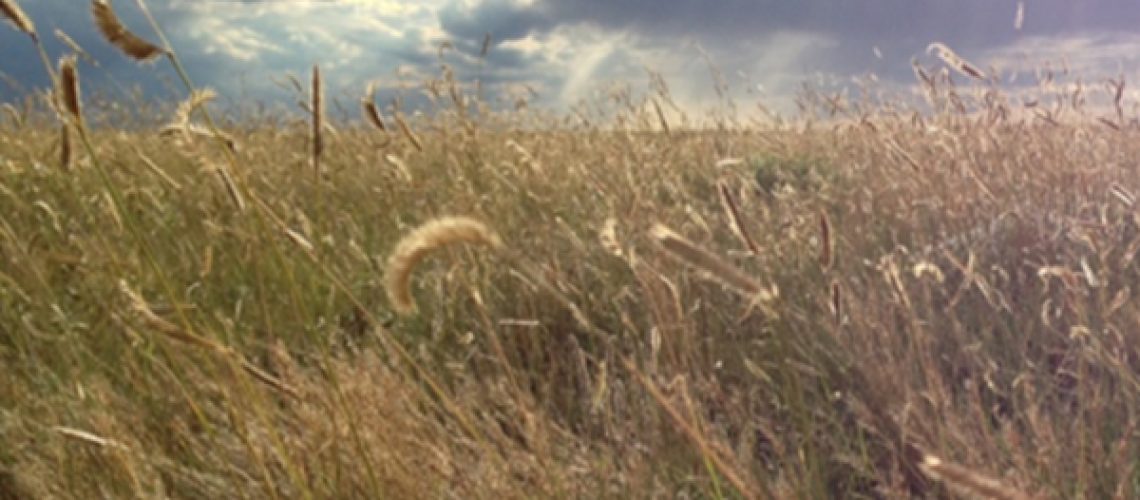By Ava Hoffman, 2017-2018 Sustainability Leadership Fellow and Ph.D. Candidate in the Department of Biology and Graduate Degree Program in Ecology
Just opposite the Rocky Mountains, the fiery sun paints the prickly pears red with long shadows and promises an unbearably blazing hot day. I step out of my reliable old field truck in northeastern Colorado and a tumbleweed races by, crisp and bouncing. My spurs jingling like a couple of quarters and my cowboy hat drawn low, I take in the orange and red sunrise. Next to my boot lies a perfectly bleached bison skull, lying on cracked, parched soil. I am a scientist in a drought-prone landscape.
Well, that’s not entirely accurate. I wear ill-fitting tennis shoes and zip-off cargo pants and work in a water-limited grassland conspicuously lacking bison bones and cowboy hats. I count drought adapted grasses and quantify their genomes. I see plants wilting with, dying from, and adapting to droughts. Yet, the droughts I study rarely disrupt day-to-day life.
Nearly halfway around the world, Cape Town, South Africa, is embroiled in a water crisis. “Day Zero”, the day the city must shut off plumbing and water to 4 million people, is fast approaching. Authorities have prepared hundreds of emergency water stations [1] and have cracked down on surging prices for bottled water [2]. Locals are banned from watering lawns or washing cars and are being urged to recycle “greywater” (sink and shower water). Even Cape Town’s thriving tourism industry is calling for each visitor to “save like a local”, urging limited shower time and fewer toilet flushes [3]. Divides between the haves and have-nots are more obvious than ever as only some residents can afford to stockpile bottled water. Other cities globally are likely to face similar drought-related crises in the coming decades [1]. However, drought is far removed from daily life for many Americans — it mostly exists in movies, Steinbeck’s Grapes of Wrath, or on bad dating apps. Water is close to being cut off in Cape Town, but taps coughing air when turned on is unthinkable to most of us.

Studies have shown that droughts are happening more and are becoming worse [4]. This prediction might be surprising given recent flooding by hurricanes in Texas and elsewhere, but these two natural disasters are opposite sides of the same coin. The key similarity is extreme climate. Gentle thunderstorms scattered throughout the year provide small amounts of water that nourish plants slowly, giving them time to soak up what they need. But if most rain falls in a strong storm, followed by longer and longer droughts, plants will die. Some types of plants may disappear from their current ranges if the extreme weather pattern holds. Longer and harsher droughts are likely to affect agriculture and intensity of wildfires. The American Midwest may be particularly hard hit by unprecedented drought in coming decades [5]. The effects of climate change are here, and they are not good. It’s time for the American people and drought to get acquainted.

Yet, plants have been surviving droughts for millions of years. How is this possible? The first strategy is to shift the abundance of species. In communities of plants, certain environmental conditions favor certain species. Shrubs with deep taproots become more common during droughts in drylands – including deserts and steppes – while grasses and herb species can become abundant when rain is available. Usually these two coworkers tolerate each other, but recent droughts are already increasing shrubs in grasslands [6]. Declining grasses could also mean loss of grazing resources for cattle and other animals. Human communities will benefit from learning to extract hard-to-reach water. But adopting water-saving strategies may mean giving up water-hungry amenities. Plant communities show us that certain strategies may come with costs in a drought-prone future.

The second strategy is adaptation. Plants in drought-prone areas have special tools at their anatomical disposal developed over thousands of years of evolution. Researchers have recently learned that xylem vulnerability to embolism – or how easily an air bubble can appear in plant water vessels – is an important factor determining plant survival during droughts [7]. Other aspects of plant hydraulics besides vulnerability to embolism are common adaptation strategies. For example, timing of leaf wilting depends on where a species comes from and is closely tied to drought resistance [8]. While modifying human genomes to use less water seems unlikely, we can learn to modify our behavior. Depending on where we are living, we should adopt the best practices to conserve water.
The third strategy I will mention here is plasticity, the ability to change with the environment. Not all traits are fixed. In fact, plant growth, leaf structure, and even color can change depending on resources. When drought is sensed, some grassland species change their leaves to become smaller and thicker, thus conserving water in the short-term [9]. Photosynthetic activity and the rates of exchange for water and carbon dioxide also tend to be flexible [10]. Plants must exchange water for carbon dioxide, and some plants shift this exchange to early morning hours. This minimizes the evaporative power of the sun, saving water with time-based plasticity. The capacity for plasticity can even be passed along across generations like an adaptation. For humans, plasticity is perhaps the most intuitive. Save water, especially when it’s in short supply. If water stores are running dangerously low, set aside any stubborn predispositions and try a different strategy as quickly as possible.

Despite these water savvy strategies, droughts are still having enormous impacts on plants, such as widespread mortality of trees weakened by drought [11]. So, next time you turn on your faucet, think about Cape Town and think about plants everywhere. Droughts will get worse, but we can prepare ourselves by practicing best water conservation practices and developing long term goals. If we learn a little bit from the plants around us, we can better respond to drought.
[2] https://www.timeslive.co.za/news/south-africa/2018-01-31-call-to-halt-bottled-water-price-hikes/
[4] Cook et al., 2014: http://link.springer.com/10.1007/s00382-014-2075-y
[5] Cook et al., 2015: http://advances.sciencemag.org/cgi/doi/10.1126/sciadv.1400082
[6] Schlaepfer et al., 2017: https://www.nature.com/articles/ncomms14196
[7] Anderegg et al., 2016: http://www.pnas.org/content/113/18/5024.short
[8] Bartlett et al., 2012: https://onlinelibrary.wiley.com/doi/full/10.1111/j.1461-0248.2012.01751.x
[9] Wellstein et al., 2017: https://onlinelibrary.wiley.com/doi/full/10.1111/gcb.13662
[10] Puglielli et al., 2017: https://onlinelibrary.wiley.com/doi/full/10.1002/ece3.3484
[11] Young et al., 2016: https://onlinelibrary.wiley.com/doi/full/10.1111/ele.12711






